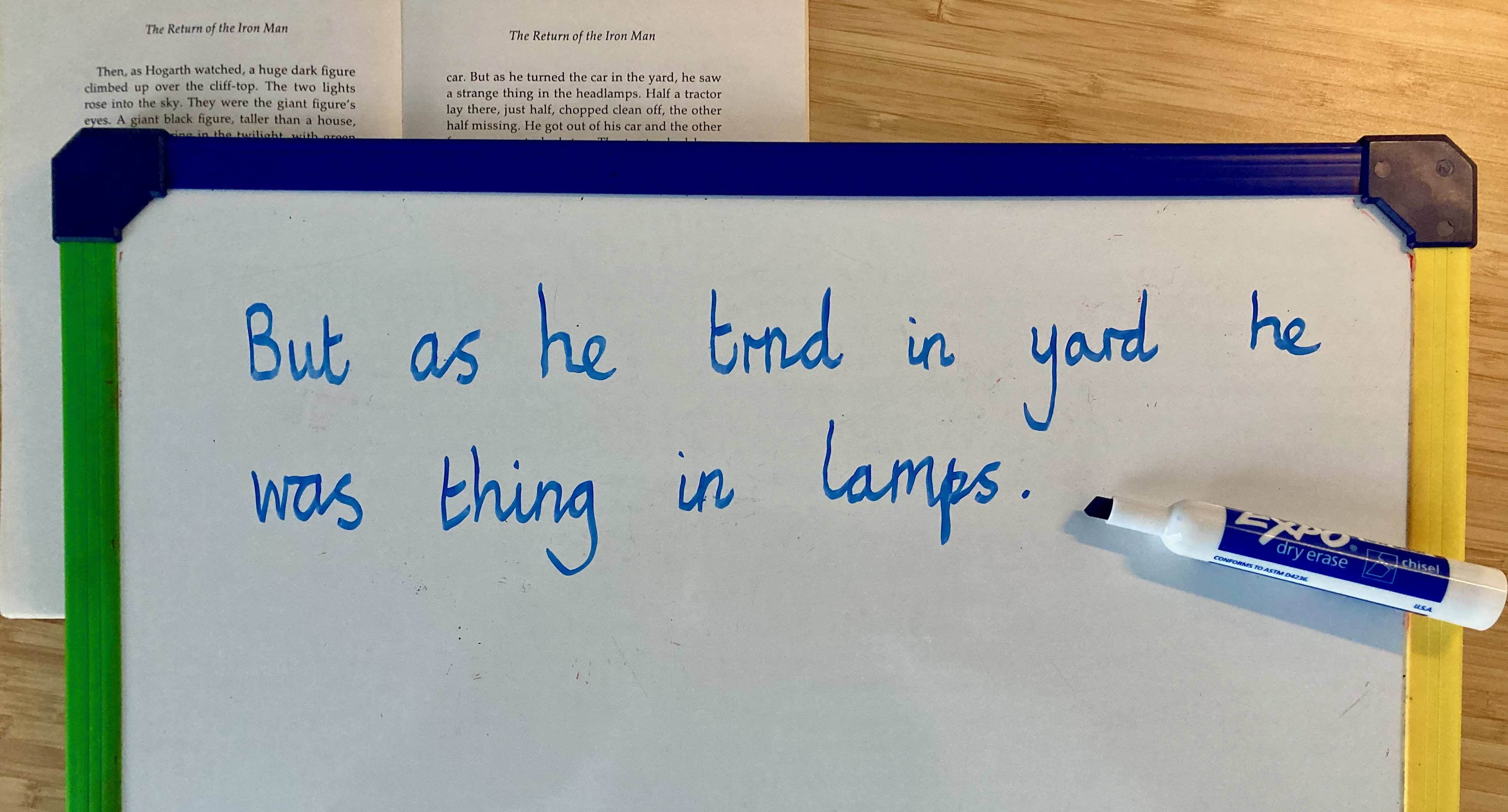Why does Will find copying things so difficult?
Will finds copying text and diagrams from a whiteboard, book or print-out challenging. He never completes the copying task in the allocated time and his copied work is full of errors.
Hardly surprising as copying is a cognitively demanding task that involves switching between attentional processes.
Before Will can begin copying, he has to ensure that he is organized with paper and writing implements at the ready - challenging in itself! Then he has to engage in a number of sequential steps, each step placing high demands on his working memory.
Top tip: Giving Will a check-list of the resources that he might need ahead of a lesson is useful. It enables him to go to lessons prepared and limits distractions e.g. hunting for a pencil.
What is going on in Will's brain when he is copying?
-
Will reads the text. This involves deciphering the text (a perceptual issue) and decoding it, using phoneme to grapheme links to create meaningful retrieval cues. Here, Will's working memory weaknesses and limited capacity are likely to limit his understanding of the text.
-
Will holds small chunks of information "in his head," e.g. a single letter or word, whilst deciding where to position it on the paper (place keeping).
-
Will now has to write down the information he is holding. To do this he has to maintain and manipulate the information whilst focusing his attention on, amongst other things, grammar, spelling and letter formation. ( A mammoth task!)
-
Next, Will scans the text on the board to track what he has already copied down (place keeping). As he is unable to hold the text that he has already copied "available" whilst scanning the further text, Will quickly loses track of his place in the text and as a result will omit, repeat or insert words as he copies.
-
Will reads and holds the next part of the text to be copied "in his head".
-
Will locates where on his paper to copy the text (place keeping) whilst holding the information.
-
Will has to write the text onto his paper. (see step 3)
Will repeats this process until he has finished copying down the text, a laborious and time-consuming task.The longer the text, the higher the burden on Will's place keeping skills and working memory.
In beginning to understand the immense cognitive demands that the apparently simple task of copying places on Will's working memory, we have realized why Will finds copying things out time-consuming and frustrating.
He becomes so distracted by the process of copying text that he does not engage with the content and does not develop his learning or understanding.
Strategies that help Will learn:
If Will has to copy text, the load on his working memory can be reduced by:
-
Explaining the purpose of the information being copied and linking it to past learning. This helps Will to identify task relevant information and promotes his relational understanding.
-
Providing Will with a printed copy/ screen shot of the text to highlight and annotate as the text is read aloud by the teacher. This reduces the processing demands of this activity and enables Will to focus on developing learning and understanding rather than on the process of copying .
-
Presenting text to be copied in a way that limits possible perceptual difficulties:
Text should be typed in a sans serif font e.g. Comic Sans or Arial, size 12 -14 font. Use a line spacing of 1.5.
Use a dark coloured text (avoid green or red as these colours and cause challenges for individuals with colour vision deficiencies) on a light coloured background. (a cream or soft pastel coloured background is best, white backgrounds can dazzle)
- Including colours, pictures and diagrams in the text as visual cues supports Will's retention and retrieval of information. These, along with bullet/numbered points, act as visual markers that support Will in place keeping.
